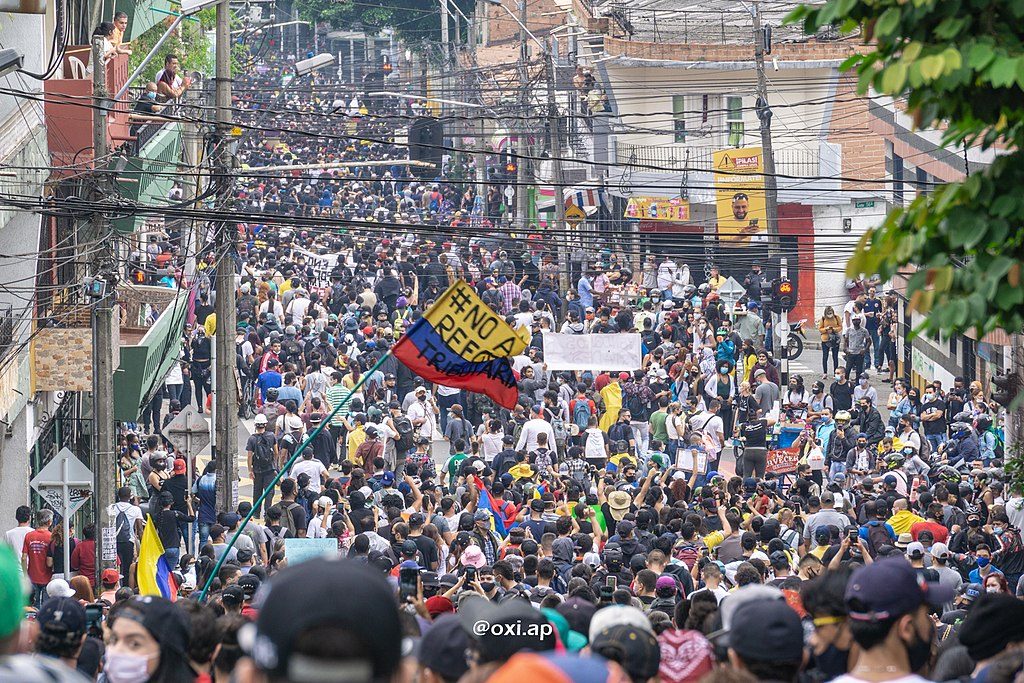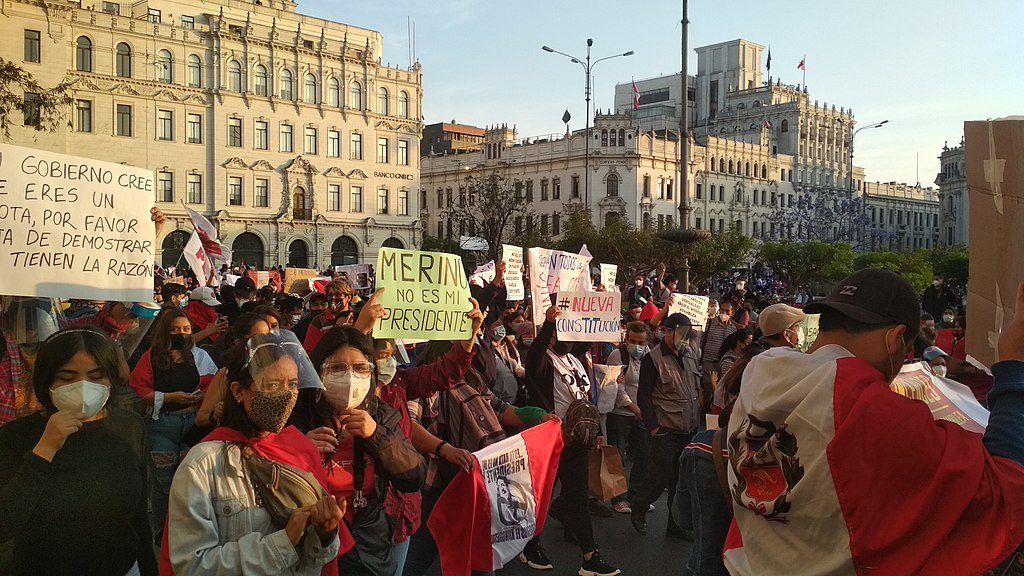“Social-spatial fragmentation,” first coined in the 2010 Arab Spring, has been reinterpreted within the recent Latin American Spring, compounded by the COVID-19 outbreak which forced social movements to adapt quickly to the unexpected circumstances of the pandemic. MSc Development Management candidate Kuan-Ju (Steven) Chen argues that a growing use of social media to platform and document public protests has been a significant factor in pressuring governments to implement policy interventions in response to demands for systemic change across the region.
Fifty years on from late-1960s counterculture
In his 2004 book, Paul Kurlansky claimed 1968 was the year that “rocketed the world”, but the wave of civil resistance surging in 2019, some five decades later, offers an alternative claim to this title. Since the pandemic outbreak, many countries in Latin America have changed their policy strategies for coping with COVID-19 in response to popular protests, including Ecuador’s cancelling of the austerity plan and Chile’s constitutional change. As the pandemic continued to affect hundreds of millions of vulnerable populations, many countries in the Global South have encountered great challenges to societal stability.
Although most forms of popular mobilisation, including protests, were halted as governments announced national lockdowns, social movements quickly adapted to unexpected situations and became even more active as they learnt to co-exist with the virus. The protests growing out of the pandemic period have diversified the common understanding of “social-spatial fragmentation,” first coined in the 2010 Arab Spring movements, in which socio-spatial relations, instead of inhibiting protests movements, de-facto facilitate them.
Protest against the government of President Jair Bolsonaro in São Paulo. Image credit: Joalpe on Wikimedia Commons.
The Latin American Spring
The Latin American Spring provides an illuminating example. According to the book “World Protests” (2022), during the period from 2016 to 2020, a total of 427 major protests were recorded across Latin America (15 percent of the cases worldwide), with a steadily rising trend since 20161. Demonstrators were motivated by a range of grievances, with calls for reduced austerity, better social protection and greater economic justice as key demands. It was the deteriorating economic outlook, aggravated by the pandemic crisis according to the United Nations Economic Commission for Latin America and the Caribbean (UN-ECLAC) — a 6.8 percent drop in GDP and 7.7 percent drop in GDP per capita in 2020); increased social inequality (Gini index is 0.7 percent higher on average in 2020 than in 2019); and the rise in extreme poverty (increased from 70 million, 11.5 percent of the Latin America population in 2019, to 86 million, 13.8 percent in 2020) — that further ignited the so-called “politics of rage” on the streets and online across Argentina, Bolivia, Brazil, Chile, and Columbia.
The emergence of hybrid social movements
To fight against harsh economic policies imposed by political parties accompanied by a powerfully oppressive policing and military system, citizens seeking economic reform created new social-spatial relations – both physical and virtual – for social movements to continue to survive and prosper across major cities like Buenos Aires, Panama City, and Sao Paulo. As well as taking account of the “bodies”, or “physical presence” of protestors in public spaces as a critical means to express political agency counting and incorporating the public’s “virtual” appearance through social media platforms recognises the critical part social media plays in social movements. Besides gathering and disseminating the information, the role of social media brings forth new dimensions of fundamental social changes – to regain and redefine what Lefebvre (1970) called “the right to the city”. Technology, including social media, has given rise to hybrid social-spatial relations within the city, where most people are hyper-connected with technological devices, the internet and social media provided them with platforms for voicing demands for change in the face of longstanding inequality.

In Latin America, where an approximate 400 million population are active social media users, the high levels of connectedness amongst specific population segments like youths, and organized clusters such as labour and trade unions, have all contributed to the building of “connections” and virtually “reoccupying” the old urban space with new content. Since the pandemic outbreak, the encrypted apps such as WhatsApp, Telegram, and Airdrop have offered safer and more anonymous means of communication and mobilisation, accelerating the efficiency and organisation of protests, even though it was found that much fake news have proliferated. The recursiveness of watching-and-sharing through virtual platforms was widely recognised as an expression of dissent, connecting crowds, and channelling the public energy to actual actions. Although some social movements were hindered by social media censorship, still there were many of them engaged in cyber-activism in various ways, including uniting at their home balconies and holding banners. It was very likely that the impacts of social media may well stay in ordinary popular movements after the pandemic, even prevailing in the future design of public policy.
The new hybrid co-constitutive social-spatial relations has changed how cities enact resistance and encourage the survival of street politics as well as novel demands for public policy interventions to deal with public grievances within cities. With the help of social media, the growing of social movements under the pandemic have been driven by a sense of solidarity among protestors, displayed among local initiatives, leaders, and activists within Sao Paolo, Buenos Aires and beyond. This has formed another kind of social-spatial relation that helped avoid the uncoordinated and inadequate national responses, enhanced societal cohesion, and even fostered a politicised collective identity to fuse all decentralised reactions into ordinary political engagement.

Conclusion: evolving socio-spatial relations
To conclude, under the context of COVID-19 crisis, the leveraging of social media indeed facilitated the dissemination of public reactions like protests and governmental decisions in response to them. Under the discussion of state-society interactions, although the dynamics of social-spatial relations developed heterogeneously across countries, the role of social media has significantly altered the social-spatial landscape, especially in the urban areas, and most importantly, deepened the understanding of “social-spatial fragmentation” for researchers and policymakers in the years to come.
The views expressed in this post are those of the author and do not reflect those of the International Development LSE blog or the London School of Economics and Political Science.






